About 30 years ago, she was a junior Agricultural Officer, traversing villages to help farmers adopt good farming practices.
But today, she is a Senior Professor of Consumer Studies, trying to help communities to not only produce, but also eat healthy.
Professor Monica Ayieko is the Research Lead at the Africa Centre of Excellence in Sustainable Use of Insects for Foods and Feeds.
The centre is domiciled at Jaramogi Oginga Odinga University of Science and Technology (JOOUST), and funded through World Health Organization (WHO) to promote research on use of edible insects for foods and feeds.
Prof Ayieko says her efforts are aimed at fighting malnutrition (hidden hunger), which has become a huge crisis in Kenya.
When you see increased cases of non-communicable diseases, it all revolves around feeding AND NUTRITION
Prof Ayiecko
And making insects a staple food in the country could be the ideal solution to malnutrition.
Despite Kenya Demographic and Health Survey 2022 reporting substantial progress in achieving proper nutrition, malnutrition remains a major challenge in the country.
The report registered reducing prevalence of stunting in children under five, which fell from 26 per cent in 2014 to 18 per cent in 2022.
African Medical and Research Foundation (Amref) reports show that Non-Communicable Diseases (NCDs) are estimated to be responsible for more than half of hospital admissions and deaths in Kenya.
“When you see increased cases of non-communicable diseases, it all revolves around feeding and nutrition,” she said.
She adds; “There is a big difference between filling your tummy and nutrition.”
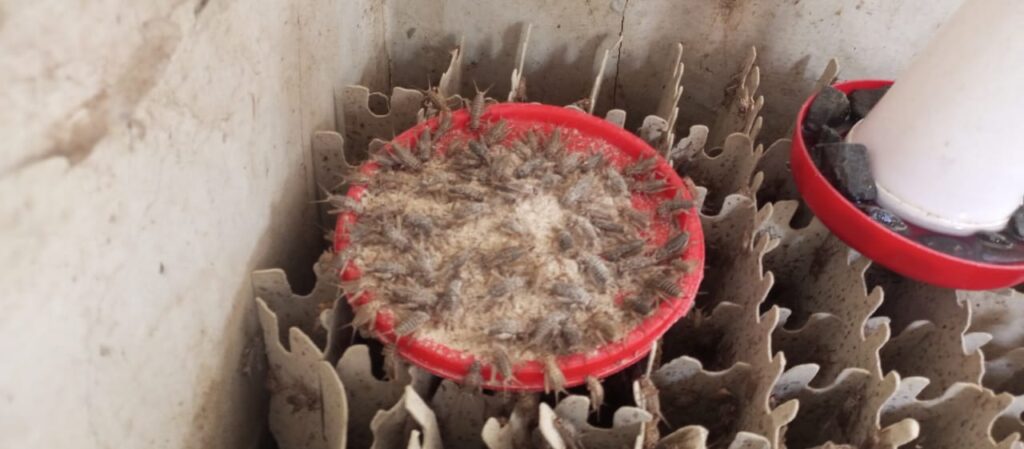
Using insects for foods
When Lake Region Bulletin visited her at the research centre, Prof Ayieko was marking a research work by one of her students in the Department of Food Security and Sustainable Agriculture.
“These are some of the work we do here,” she said as got down to begin the chat.
Prof Ayieko earned her first degree in Agricultural Production in the 1980s, and worked as an Agricultural Extension Officer.
She then got government scholarship to pursue Masters Degree and Doctorate of Philosophy in Consumer Economics at University of Illinois, graduating in 1995.
“This was the time HIV was ravaging the world, and nutrition was a major component in the management of the disease,” she said.
“I dwelt on impact of HIV in child-headed households,” she added.
Her research involved studying the nutrition value of edible insects.
At this time, she was working at Maseno University.
She had her first publication on insects in 2002.
She later moved to JOOUST, where she scaled up her research.
Through the project, we have trained over 2, 000 farmers on multiplication of insects, eating and value addition
Prof Ayiecko
In 2015, she successfully presented a proposal to World Health Organization through the university to support research and training on insects.
The Sh600 million project commenced two years later, and entailed sustainable use of insects for foods in humans, and feeds in domestic animals, with focus on production, processing, eating and value addition of insects.
And for the past six years, the project has trained 185 Masters students in the field of insects, as well as 30 PHds.
“Through the project, we have trained over 2, 000 farmers on multiplication of insects, eating and value addition,” she said.
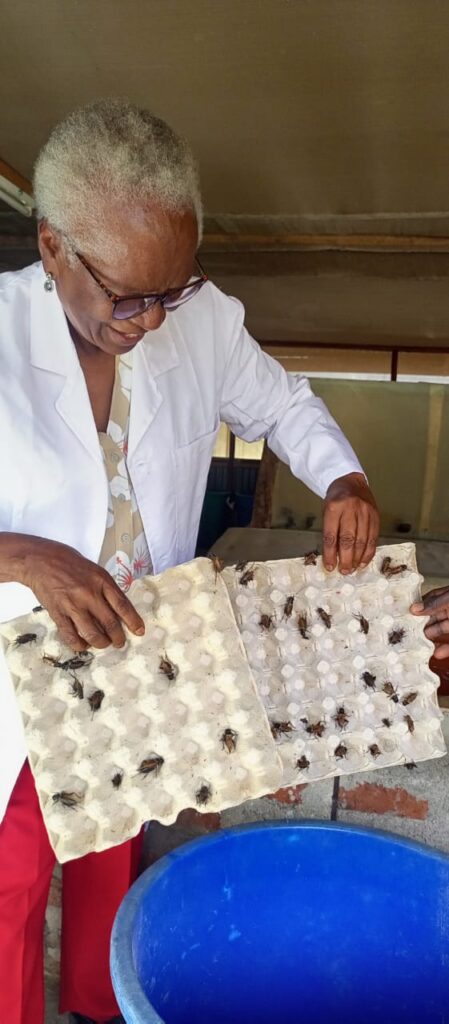
Keeping crickets
Chirping sounds engulf the compound which hosts the department’s insect farm.
One of the houses hosts crickets while another houses lava of black soldier fly.
According to Prof Ayieko, her research has covered 180 insects throughout the study period.
“We have termites, lake flies, beets, locusts, caterpillars, among others,” she said.
Crickets are some of the most common insects adopted by many farmers in Western Kenya.
According to Prof Ayieko, farmers can pick wild crickets from the field, and put in special pens.
Others can also buy cricket eggs from those already breeding.
The eggs take 15 days to hatch, and the young crickets allowed to grow to maturity in the same pen.
They are fed on growers mash, black jack, sweet potato vines, and water in moist old blankets placed inside the pen.
“Cleaning the pen regularly, and the food containers reduces chances of mortality,” says Kelvin Odhiambo, one of the Farm Attendants.
If not well attended to, he says ants, spiders and lizards may attack, and kill them.
He says one pen can carry six to 10 kilos of cricket at maturity stage.
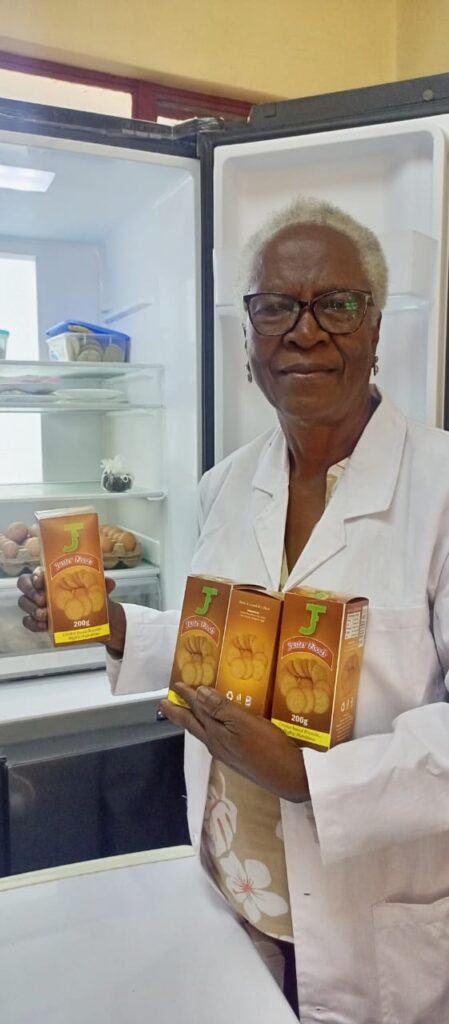
Insects have high nutritional value
According to Prof Ayieko, the studies have revealed that nutrition from insects is far much better than most of the common foods we eat.
“The study involves crashing the insects and testing the nutrition value,” she said.
And of those studied, Prof Ayieko said the insects have recorded high value of Vitamin A, Proteins, Zinc and Iron.
“These are some of the nutritional elements which are very critical for humans,” she said.
And of all the insects studied, Prof Ayieko said no reports of major side effects have been recorded.
A few people have also reported little allergic reactions, such as itching of throat, and rushes, but we have an ongoing study on the sensitivity of the insects so as to find the true picture of this,
Prof Ayiecko
“Just a few cases of some people nauseated after eating some of the insects, but this is all psychological, especially when one has the visual expression of the insects,” she said.
She noted that some of the insects, like caterpillars also have high fat content, hence could be associated with the feeling of vomit.
“A few people have also reported little allergic reactions, such as itching of throat, and rushes, but we have an ongoing study on the sensitivity of the insects so as to find the true picture of this,” she added.
But with value addition, Prof Ayieko said the acceptability of the insects food has been high.
At JOOUST, she uses cricket to make biscuits.
But she says there is need for mass production so as to sustain the demand for industrialised value addition which can meet the market demand.
And to actualize this, the university is constructing a temperature controlled room for cricket production.
Prof Ayieko says due to Climate Change, fluctuating temperatures, as well as other weather conditions have been suspected to hinder the reproduction of crickets.
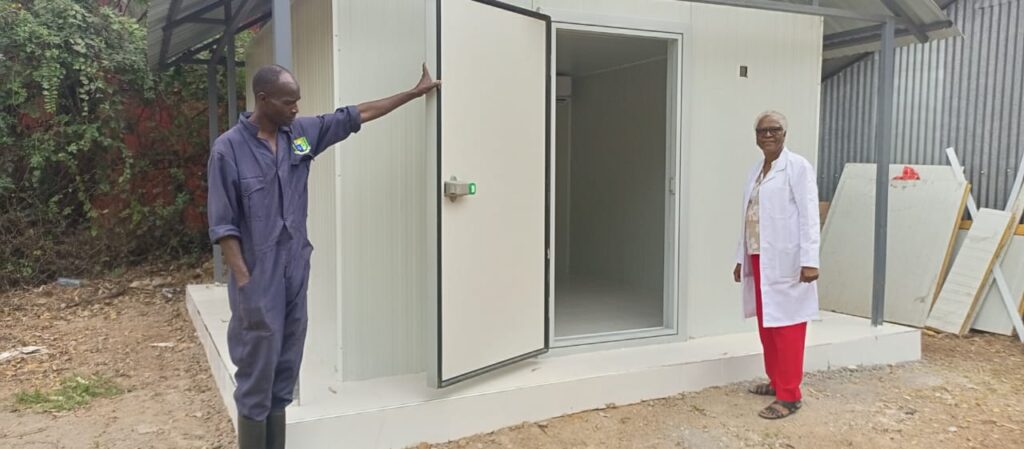
“In this room, we will have a constant temperature at 32 Degrees Celsius and have the other factors kept constant,” she said.
She adds; “If this proves to work, then we can recommend it for industrial production of crickets.”
She however says this can only be adopted by industries, as small scale farmers may not be in a position to afford the controlled-temperature room.
“Unless through innovations, the farmers come up with cheaper locally made material to achieve put up such a structure,” she adds.
Community embracing insects, worms
Fred Adede, 60, is one of the farmers who have embraced insects and worms production.
For eight years, the resident of Kametho village in Rarieda had been engaged in poultry and vegetable farming, until two years ago when he discovered Black Soldier Fly (BSF).
Mr Adede is the chair of a chicken value chain platform in Siaya County.
It was through the platform that he learnt of BSF larvae being the best alternative to the modern expensive chicken feeds.
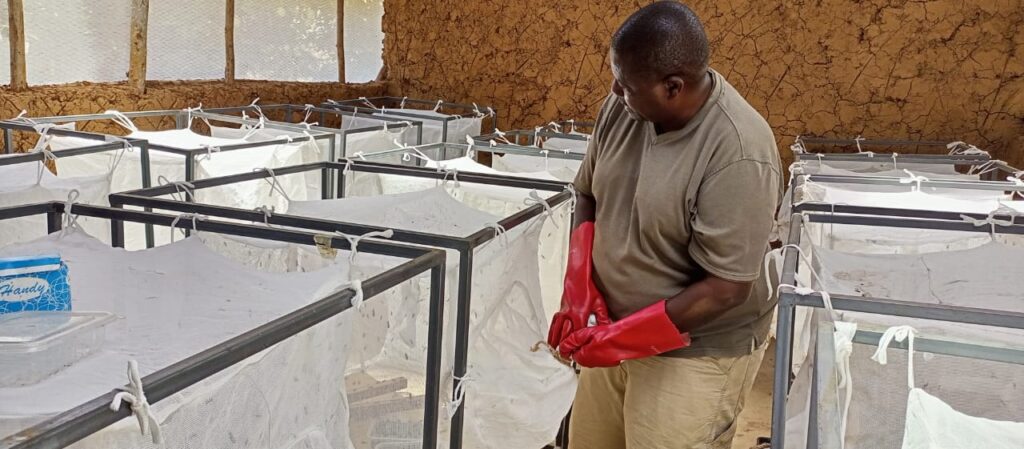
“Some of our colleagues in the platform had heard about it, and when an extension officer visited me, he gave me more information about it, and I swiftly moved in,” said Adede.
For Mr Adede, through his networks, he managed to acquire eggs of BSF, which he hatched to multiply.
But he says farmers can attract BSF through putting market and kitchen wastes in an open place.
The scent from the waste attracts the BSF, which feed on them, and lay eggs there.
The turnaround time for this is short, and it requires small space, and I encourage farmers to embrace it
Fred Adede
“One BSF can lay upto 1000 eggs,” he says
The eggs then hatch and grow into larvae. This takes upto five days.
And between eight to ten days, the larvae are ready for harvesting.
Adede says, for sustainability, he harvests 80 per cent of the larvae, and allows the rest to grow into pupal stage, and into flies which are then used to produce more eggs, and the cycle continues.
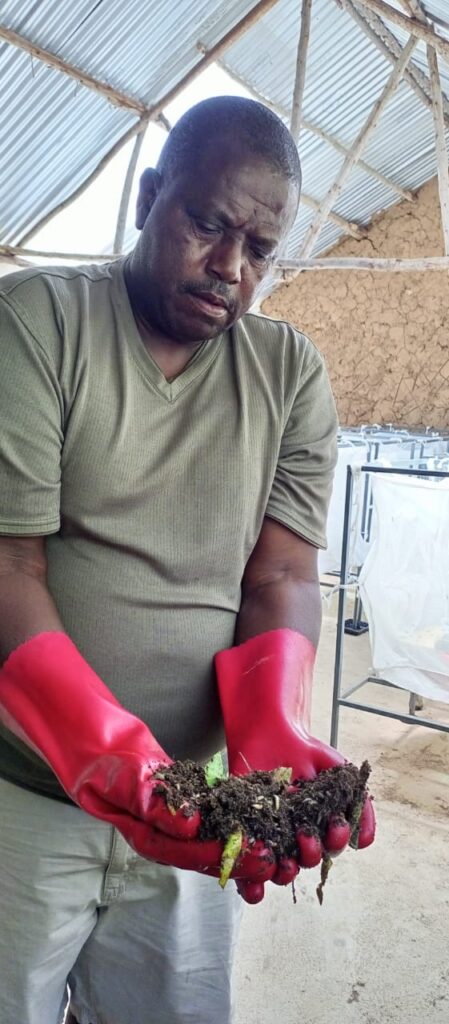
Pupa are in dormant stage, and do not feed, hence those selected for full life cycle are transferred in some special nets where they stay for upto 14 days to turn into flies.
The larvae are said to be rich in proteins, which is key in poultry farming.
Even though poultry feed on the various stages of the BSF life cycle, Adede says the larvae stage is the best as it has the peak of nutritional value.
The larvae can be fed to the poultry as at harvesting, but can also be dried and mixed with other components for commercialization.
“The turnaround time for this is short, and it requires small space, and I encourage farmers to embrace it,” he says.
